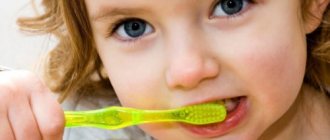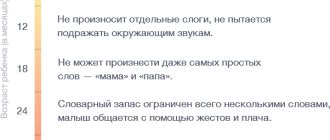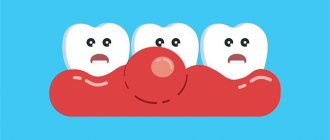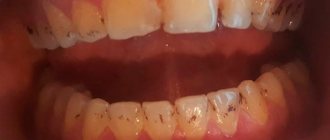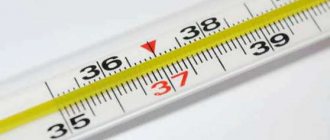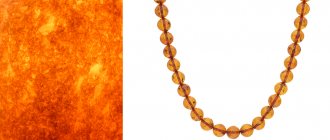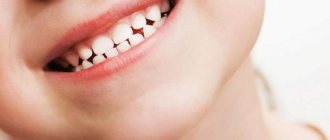You can help a child who is teething using both medicine and traditional methods. Babies experience severe discomfort and need the love and support of loving parents more than ever. The pain syndrome can be minor, so sometimes lightly massaging the gums and using teethers with cooling gel are enough to relieve symptoms. All methods are selected individually for each little patient. The eruption of teeth occurs in a certain order, so mom and dad are able to predict where inflammation and swelling are localized and direct all efforts to eliminate pain and itching.
Children's teeth
Every healthy baby eventually shows its first incisors. Their appearance obeys the laws of nature, the process is accompanied by certain symptoms, which in most cases are the same and go away in a few days. If you provide the baby with comfortable conditions and help cope with unpleasant sensations, the painful period will pass almost unnoticed.
Teething symptoms
Attentive parents can notice how the behavior of a little person changes when the first dental units appear. Panic arises from not knowing what to do when teeth are being cut, because the child often cries, and mom and dad forget about night rest and peace during the day. Other characteristic features:
- swelling of the mucous membranes and gums;
- excessive salivation;
- increase in body temperature to subfebrile levels and higher;
- a constant desire to put everything in the mouth and chew due to pain or itching;
- sleep problems;
- tearfulness, irritability or complete apathy;
- refusal of the mother's breast or bottle;
- stool disorders (diarrhea, constipation);
- redness of the throat due to increased blood flow;
- vomiting, excessive and frequent regurgitation;
- nasal congestion, cough;
- allergic rashes (in rare cases).
The listed symptoms are not always observed. Sometimes babies are not worried at all and behave as usual, so changes that have occurred can only be detected by examining the oral cavity. In the place of future dentition, white dots are visible - parts of crowns that have not fully erupted.
The emergence of fangs is often accompanied by pain in the eyes. The baby rubs them with his hands, blinks frequently, and may experience lacrimation.
How to provide the right help
Much depends on the behavior of an adult, because the right methods ease a troubled stage in a child’s life.
Parental care
One of the best methods for calming your baby when teething is to hold him in your arms. The warmth and care of the mother will help to cope with the problem, and next to their parents they feel safe and stop crying faster. Children are sensitive to the behavior of adults, but are easily distracted by a toy, song, or affectionate conversation.
Modern teethers
Children are happy to put products made of safe silicone or plastic into their mouths and chew them to make them feel better. A medical device has its own manufacturing and application features.
- Some teethers are equipped with massage inserts for a soft effect.
- The material for the products is soft rubber, silicone or hard plastic.
- Children's brushes may be provided.
- The textured surface allows for better massage of swollen areas.
- Polymer rings are filled with water, cooling and pain-relieving fluid. They are stored in the refrigerator.
- Sets of 3 products with different degrees of hardness for different growth periods are available for sale.
Some children refuse helpers and chew on ordinary rubber toys, which successfully eliminate severe symptoms.
Modern teethers made of safe materials
Massage
Use gentle massage movements to reduce pain during teething - how to relieve such manifestations in each case is best decided by the doctor. Use massage brushes made of safe materials and cooling gels.
For the procedure, if you don’t have a brush, you can wrap one finger in a sterile bandage or gauze, then moisten it in a decoction of chamomile or oak bark.
How to lower your temperature
An increase in body temperature is not observed in all infants. This symptom appears as a result of the body’s reaction to redness, swelling in the gum area, and inflammation inside it. Nevertheless, parents of infants must have antipyretics and pain relievers during teething in their first aid kit.
The medicine is given to children in the form of syrup. A suspension with paracetamol is prescribed, for example, Panadol, Nurofen with the active ingredient ibuprofen. Paracetamol suppositories are effective.
How to lower the temperature correctly
In what order are teeth cut?
Before facilitating teething in a child with the help of drugs or non-drug methods, it is necessary to understand the sequence of appearance of all units and check for any deviations from generally accepted norms. The incisors come out first, then the premolars, canines and molars. However, each person’s body is individual, so small exceptions to the rules are possible.
Some babies show crowns very early, before six months of age. For other children this happens several months later.
Experts say that by the age of 3, a baby should have 20 crowns visible. Sometimes anomalies occur: incorrect placement and curvature of the rows, as well as darkening of the enamel. A brown surface may indicate that the expectant mother took antibacterial drugs during pregnancy. A yellow-green color often indicates problems with bilirubin metabolism. Also, in some cases, such a sign indicates liver disease and the death of red blood cells (erythrocytes).
Timing of teething in children
The upper and lower central incisors are fully erupted, usually at the age of 1 year. The process begins as early as 6 months. The lateral ones grow not much later. The canines emerge on the surface of the gums before the age of two; the growth of premolars and molars can extend over a longer period.
Parents should not panic if suddenly the baby’s first front teeth appear on one of the jaws, but on the other they are cutting only on the side. At the same time, it is important not to miss serious chronic pathologies, which are also accompanied by violation of generally established deadlines. If you have doubts that everything is in order, it is better to consult a doctor. Dental specialists will advise mom and dad, conduct diagnostic tests and, if necessary, refer you to specialist doctors.
Rating of the best teething remedies
| Nomination | Place | Name | Price |
| The best gels with an analgesic effect | 1 | Kamistad Baby gel | 305 ₽ |
| 2 | Kalgel | 460 ₽ | |
| 3 | Dentinale Natura gel | 860 ₽ | |
| 4 | Baby Doctor gel first teeth | 340 ₽ | |
| 5 | Dentinox | 320 ₽ | |
| 6 | Holisal | 390 ₽ | |
| 7 | Pansoral first teeth | 402 ₽ | |
| The best organic and homeopathic remedies | 1 | Dantinorm Baby | 540 ₽ |
| 2 | Dentokind | 570 ₽ | |
| 3 | Viburkol | 430 ₽ | |
| 4 | Boiron Camilia | 700 ₽ | |
| 5 | Christopher's Original Formulas Kid-e-Col Extract | 1940 ₽ |
How to help without drugs
Medications are actively used during teething, but how to calm a child when teething using other methods? Massage prescribed by a dentist is highly effective. This way pain is eliminated by slight pressure. Another option is cooling the gums, which causes vasoconstriction (the principle is similar to the effect of ice on bruises and other injuries).
You need to massage painful areas exclusively with clean fingers. Silicone brushes are also suitable, suitable for babies six months of age and older. It is necessary to wash the accessory well and, if possible, sterilize it. Care should be taken to avoid excessive pressure. Some people are of the opinion that physical interference with the natural course of events can subsequently lead to caries and other pathological processes, but this is wrong.
Pharmacies and children's stores sell special teethers made of silicone and other soft materials that do not form jagged edges when chewed. The most effective are models with a non-uniform ribbed surface. Silicone rings with a gel-like substance inside are also used for cooling. You need to place the item in the freezer for a short time, and then give it to the baby.
Chilled complementary foods (mashed potatoes, juice, cottage cheese) will also relieve pain. A one-year-old can be offered a cool banana or apple.
Negative consequences of late eruption of “eights”
The inconvenient location of these teeth for cleaning leads to the accumulation of bacteria and the development of caries, which spreads to neighboring teeth.
Late growth promotes the formation of tumors and cysts.
Maybe:
- Excessive tissue growth that will have to be removed surgically;
- Mechanical displacement of adjacent teeth in the process of freeing up space;
- Violation of the position of the jaws;
- Headache;
- Uneven distribution of load when chewing;
- Formation of traumatic nodes and gingival hood;
- Overhang of the mucous membrane, under which bacteria accumulate.
If measures are not taken in a timely manner, the pathological process will spread, affecting adjacent teeth, cheeks, tongue, chewing muscles, jaw bone and periodontium.
How to help your child with medicine when teething
For some children, homemade recipes and other non-drug methods do not help. This is due to the different sensitivity and susceptibility of the body of small patients. All medications should be selected exclusively by a doctor. It is likely that the infant has a history of chronic and other diseases for which drug therapy is strictly contraindicated. Self-prescription of pharmaceutical products can lead to allergic reactions and other side effects, so it is better not to rely on reviews on the Internet and advice from other mothers. Let's look at how to help a child teething with the help of medications.
Kalgel
The combined gel has an anesthetic and anti-inflammatory effect. The active ingredient is lidocaine, that is, inflamed and swollen gums seem to be “frozen.” Sold exclusively with a doctor's prescription. It is necessary to observe the exact dosage and avoid excessive use. The effect lasts for a long time.
Kamistad
Produced in Germany. The principle is almost identical to the previous drug, but the composition contains harmless polidocanol and tincture of chamomile flowers. Herbal components help eliminate pain, itching, inflammation, swelling and redness. The composition is sweet, so the little patient will not spit it out and will be happy to open his mouth. It is often prescribed by doctors for diseases of the oral cavity.
Holisal
The gel-like substance contains choline salicylate and auxiliary components. Prescribed also for adults. Allowed for use over six months of age. It acts quickly and relieves a wide range of dental problems. This is one of the best remedies for pain relief when a child is teething badly. The disadvantage is the higher cost compared to analogues.
Dentinox
A paste based on lidocaine and chamomile extract disinfects treated surfaces of the oral cavity, relieves pain and swelling of soft tissues. Unpleasant sensations are eliminated in a short period of time, the baby sleeps soundly, does not cry for no reason, and happily eats mother's milk or an adapted formula from a bottle. Since the gel is applied externally, it is completely safe when used in moderation.
Medicines
Using analgesics will eliminate the pain, but its source will remain. Use:
- Anti-inflammatory drugs to reduce fever and swelling (paracetamol, ketorolac, ibuprofen);
- Analgin and local anesthetics reduce tissue sensitivity;
- Antiseptics (miramistin, chlorhexidine) - act on pathogenic microorganisms.
Folk remedies
Medicines are effective for teething, but what should you give a child when teeth are cutting and you don’t want to use synthetic drugs? Home methods are auxiliary because they cannot always completely eliminate pain. However, for some children, these options are the most preferable and really help cope with pain. Doctors sometimes advise using:
- Compresses with chamomile. It is necessary to moisten a bandage or cotton pad in chamomile infusion and then apply it to the painful cheek. To relieve inflammation and swelling, dentists recommend giving several teaspoons of herbal tea.
- Honey. If the baby is not prone to allergic reactions, you can lubricate the inflamed mucous membranes with a honey substance. You should rub the substance in carefully, otherwise the baby will simply swallow it, and all manipulations will be useless.
- Soda solution. It is recommended to dissolve 1 tsp. soda in a glass of clean warm boiled water, dip a gauze cloth and wipe the gums. This product helps not only relieve pain, but also disinfect the surface.
Before using traditional methods, you must always consult a doctor, even if the herbal substances used are considered completely safe. Sign up for a consultation at the dental office, our specialists will recommend effective formulations that will not harm the little patient.
What is the danger of late eruption?
There is a possibility of complications not only in the mouth, but also for the whole body:
- With prolonged accumulation of pus, which has no outlet, soft tissue melts, provoking the spread of infection and the formation of abscesses;
- The bite may be affected;
- If a tooth is cut towards the cheek, chronic injury occurs;
- Clamping of the mucous membrane with teeth leads to the appearance of a long-term non-healing wound and, as a result, ulcers;
- The temperature rises, weakness appears;
- Purulent inflammation eventually spreads to the periosteum.
The process is often aggravated by incorrect positioning or impaction of the tooth:
- Pericoronitis develops - the gingival hood becomes inflamed, as food accumulates in it and pathogenic bacteria multiply; in the absence of timely treatment, osteomyelitis and periostitis develop;
- A completely impacted tooth is the cause of neuralgia, facial pain, and cysts;
- With a horizontal direction of growth, the “figure eight” destroys neighboring teeth, causing caries;
- A wisdom tooth can begin to grow after the installation of a prosthesis, causing a lot of inconvenience to a person.
To prevent the development of complications, you should visit the dentist as soon as possible - the doctor will assess the situation and decide what to do.
How to calm your baby
Many young mothers worry about what to do and how to alleviate the condition when the child is teething, because he screams loudly and cannot sleep or eat normally. The best way to help a newborn is to breastfeed frequently. During the sucking process, the baby calms down, feeling maternal protection and love.
Parents may notice that regurgitation has become a common occurrence at this time. This feature is associated with abundant salivation and is quite natural. It is important not to confuse the periodic passage of air and food with vomiting, which is dangerous to life and health due to the high risk of dehydration.
Help at night
The pain becomes especially severe at night. If sleep is disturbed, the baby constantly cries and is capricious. An integrated approach will help to cope with the problem.
First of all, they take him in their arms. Apply a special preparation to the gums and measure the temperature. Use chilled teethers or water with a pacifier in a bottle.
To avoid nighttime whims, it is recommended:
- before bed, take a herbal bath of chamomile or string;
- feed and give water;
- Apply the pain-relieving gel prescribed by the doctor to painful areas;
- calm down, sing a lullaby, carry in your arms if necessary;
- ventilate the nursery, create comfortable conditions for sleeping.
A pillow should be placed in the baby's bed so that due to the high position of the head, less blood flows into the gum area. For this purpose, raise the mattress slightly at the head of the bed.
Recommendations! Many fathers and mothers do not want to accustom their children to holding hands, but do not be afraid of this, because at such a difficult stage, infants need special support and help.
How to improve your baby's sleep
Dental care
The oral cavity needs high-quality hygiene, even if only one incisor has erupted. At first, it is enough to wipe the crowns and gums with a cotton pad or a piece of bandage soaked in clean water (necessarily boiled). You can do this once a day for up to a year.
In one-year-old children, plaque formed from food is removed with a special silicone brush, which is placed on the finger of mom or dad. At 1.5 years old, the baby will be able to clean himself. Two-year-olds pick up the usual children's brushes with soft bristles, suitable for a certain age category.
One of the most important skills is the ability to rinse your mouth. At the age of two, a little person can already learn to do this on his own. Don’t forget about preventive visits to the pediatric dentist. The first visit is indicated at 12-14 months.
Additional recommendations
In addition to drug treatment, many methods can be used to relieve pain.
In addition to being attentive to the health and behavior of children, the following rules are observed:
- include raw carrots and apples in your diet;
- during teething, sleep next to mom;
- ventilate the children's room more often, especially during sleep;
- give plenty of fluids throughout the day, as they are lost through excessive salivation;
- to protect delicate skin from irritation due to a large amount of saliva, apply a moisturizer around the mouth, on the cheeks, neck and chin;
- pay more attention, play outside in the fresh air, at home with toys;
- hold vertically, which will help reduce blood circulation in the painful area;
- monitor the air temperature, do wet cleaning in the room and ventilate it;
- at the age of approximately 1-1.5 years, you can purchase a silicone brush;
- take vitamin complexes prescribed by the doctor;
- when breastfeeding, it is recommended to feed more often on demand;
- do not allow sweets and chocolate on the menu, because sugar and starch are a source of food for pathogenic bacteria.
Help during the appearance of baby teeth
When to see a doctor
When discussing what to do when teething in children, how to treat inflamed gums, parents may not notice the onset of a pathological process that is not associated with natural signs. Symptoms that do not go away within several days most likely indicate a disease that requires urgent attention to a pediatrician.
In six-month-old babies, the immunity acquired in utero decreases, and their own is only at the initial stage of its formation. The baby is vulnerable to infections and viral agents. When teeth appear, lack of sleep and other discomfort are observed, as a result of which the protective functions of the child’s body are significantly reduced.
Alarm signals:
- a sustained increase in body temperature to 39 degrees or more, antipyretic drugs do not help or show little effectiveness;
- cough with a large amount of mucus;
- persistent stomach upset;
- blood in stool;
- ulcers on the mucous membranes of the mouth;
- prolonged runny nose, purulent nasal discharge;
- constipation for more than 3 days;
- the shade of the enamel differs from the norm, there are yellow spots or other inclusions;
- the crowns are positioned incorrectly and protrude significantly beyond the boundaries of the row.
If the baby is one year old and not a single tooth has appeared, it is necessary to undergo an examination. The problem probably arose due to a lack of minerals, metabolic disorders, and thyroid disease.
Prolonged diarrhea
In most cases, such symptoms are observed for no more than two days. However, exceptions are possible when the baby suffers from diarrhea for up to a week. In this case, it is recommended to visit a therapist. Your doctor will prescribe safe and effective medications to help harden your stool.
If you leave a dangerous sign unattended and think only about how to relieve pain from teething in a child, this can lead to severe dehydration and exhaustion. The most dangerous phenomena are bloody and mucous impurities in the stool.
Temperature
When the thermometer shows 38.5 or higher temperatures that do not subside, you should definitely call a pediatrician. The body of a small person does not yet have perfect thermoregulation; such a condition is extremely dangerous and sometimes life-threatening. Only a specialist should monitor a baby with a high fever.
Persistent cough
Minor sputum production and occasional coughing are considered normal. What to do when teething in children, how to treat it, if the cough syndrome does not go away and does not allow babies to breathe, eat and rest normally? Such symptoms, along with shortness of breath and hoarse breathing, should alert mom and dad. It is likely that, against the background of a decrease in the body’s defenses, a bacterial or viral infection has occurred.
Let's sum it up
The appearance of the first incisors, canines and molars is the most important stage in the life of a small person. Parents should show special care and attention during this exciting period and support the baby as much as possible. You can help a teething child with both medications and non-drug methods. The main thing is to choose an effective and safe method, taking into account the individual characteristics of the child’s body. If suspicious symptoms occur, it is important to promptly consult a doctor to exclude infectious and other pathological processes not related to the emergence of new dental units.
Content
- How wisdom teeth erupt
- Causes of difficulties
- The danger of late eruption
- How can wisdom teeth erupt faster?
- Negative consequences of late eruption
- Ways to get rid of problems
- Medicines
- Home method
- Surgery
Wisdom teeth are rudiments, organs that have lost their significance. They are the last to be cut, pushing the neighboring ones along the way. It is often accompanied by pain, so you have to see a doctor.
